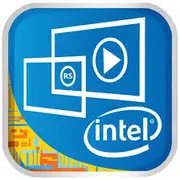Intel Core m7-6Y75

인텔 코어 m7-6Y75: 컴팩트한 노트북을 위한 울트라 모바일 프로세서
2025년의 가능성과 적합성 분석
아키텍처와 기술 프로세스: 효율성과 컴팩트함의 균형
2015년에 출시된 인텔 코어 m7-6Y75 프로세서는 울트라북과 태블릿을 위한 에너지 효율적인 솔루션 라인의 일부가 되었습니다. 비록 세월이 흘렀지만, 2025년에도 이 프로세서를 기반으로 한 장치가 예산형 시장에서 여전히 나타나고 있습니다 (신모델 가격: $500–700).
주요 특징
- 코어 및 스레드: 2코어, 4스레드 (하이퍼 스레딩 지원).
- 클럭 속도: 기본 속도 — 1.2GHz, 터보 부스트의 최대 속도 — 3.1GHz.
- 그래픽: 최대 1000MHz의 Intel HD Graphics 515.
- 기술 프로세스: 14nm (스카이레이크 아키텍처).
아키텍처의 특징:
- 에너지 효율: 액티브 쿨링 없이 슬림한 케이스에서의 작업을 위한 최적화.
- iGPU: HD Graphics 515는 디스플레이 포트를 통해 4K를 지원하지만, 심각한 게임 플레이에는 적합하지 않음.
전력 소비와 TDP: '차가운' 접근법
이 프로세서의 TDP는 4.5W로, 수동 쿨링 시스템에서 사용할 수 있게 해줍니다. 이는 1kg 미만의 울트라북, 예를 들어 레노버 요가 900 (2016년) 또는 델 XPS 12와 같은 장치에 필수적입니다.
전력 절약 기술:
- 인텔 스피드스텝: 전력 소비를 줄이기 위한 주파수 동적 조정.
- 터보 부스트 2.0: 작업 가속을 위한 3.1GHz의 단기 오버클럭.
성능: 2025년의 코어 m7-6Y75는 어떤 성능일까?
Geekbench 6의 테스트 결과(Single-Core: 876, Multi-Core: 1626)는 프로세서가 기본 작업을 수행할 수는 있지만, 최신 프로세서에는 뒤처진다는 것을 보여줍니다.
실제 시나리오
1. 오피스 작업:
- Microsoft Office, Google Workspace — 지연 없이 작업 가능.
- Chrome에서 10개 이상의 탭을 동시에 여는 것은 가능하나 약간의 지연이 발생함.
2. 멀티미디어:
- 4K 비디오 재생 (YouTube, 로컬 파일) — 안정적으로 수행됨.
- 라이트룸에서의 사진 편집 — 느리지만 가벼운 수정에는 수용 가능.
3. 게임:
- 오래된 게임: Dota 2 (720p, 낮은 설정) — 25–30 FPS.
- 2025년의 현대 게임 — 권장하지 않음.
터보 부스트 모드:
부하가 걸리면 프로세서는 잠시 동안 3.1GHz로 가속되지만, 제한된 TDP로 인해 빠르게 기본 속도로 돌아옵니다. 수동 쿨링 노트북에서는 5–7분 안에 쓰로틀링이 발생하게 됩니다.
사용 시나리오: 이 프로세서는 누구에게 적합한가?
코어 m7-6Y75는 다음과 같은 사용자에게 적합합니다:
- 학생 — 텍스트 작업, 온라인 강의, Zoom 사용.
- 여행자 — 컴팩트한 사이즈와 배터리 수명.
- 보조 장치 — 주요 PC의 보조 장치로.
부적합한 사용자:
- 비디오 편집, 3D 렌더링.
- 현대 게임.
배터리 수명: 이상적인 조건에서 최대 10시간
배터리 용량이 40–50Wh인 울트라북(예: HP Spectre x360)에서는 다음 조건에서 8–10시간의 작동 시간을 달성할 수 있습니다:
- 화면 밝기 50%.
- 브라우저와 오피스 응용 프로그램에서 작업할 때.
전력 절약 기술:
- 패널 셀프 리프레시 — 정적인 이미지에서 GPU의 부하를 줄임.
- 커넥티드 스탠바이 — 슬립 모드에서 백그라운드 업데이트.
경쟁사와의 비교
인텔 vs AMD vs 애플
1. AMD 라이젠 3 7320U (4nm, 2023년):
- 4코어, TDP 15W.
- Geekbench 6 Multi-Core: ~3200.
- 노트북 가격: $600부터.
2. 애플 M1 (5nm, 2020년):
- Geekbench 6 Multi-Core: ~7500.
- 성능에서 완전한 지배력을 자랑하지만, 가격이 높음 (약 $900부터).
결론: 코어 m7-6Y75는 최신 저렴한 CPU에도 뒤처지지만, 장치의 가격에서는 이점을 가집니다.
장단점
강점:
- 낮은 열 발산.
- 장치의 컴팩트함.
- 합리적인 가격 (신모델은 $500–700).
약점:
- 낮은 멀티코어 성능.
- 제한된 지원 기간 (드라이버 및 업데이트).
노트북 선택 추천
1. 장치 유형: 울트라북 또는 하이브리드 태블릿 (예: Microsoft Surface Pro 4).
2. 사양:
- 필수: SSD 256GB 이상, RAM 8GB 이상.
- 추천: Full HD 해상도의 화면.
3. 쿨링: 구리 방열판이 장착된 모델을 선호하세요.
최종 결론
2025년의 인텔 코어 m7-6Y75는 다음과 같은 사용자를 위한 선택입니다:
- 최경량 및 저소음 노트북을 찾는 사용자.
- 높은 성능을 필요로 하지 않는 사용자.
- 예산이 한정된 사용자.
주요 이점: 배터리 수명, 휴대성, 가격. 그러나 진지한 작업에는 AMD 라이젠 5 또는 애플 M1 기반의 장치를 고려하는 것이 좋습니다.
가격은 2025년 4월 기준입니다. 코어 m7-6Y75 장치는 생산 중단으로 인해 예산형 신제품 카테고리에 속하며, 재고가 남아 있는 한 저렴한 가격에 판매됩니다.
기초적인
CPU 사양
메모리 사양
GPU 사양
여러 가지 잡다한
벤치마크
다른 CPU와 비교
소셜 미디어에서 공유하기
또는 링크로 소개하기
<a href="https://cputronic.com/ko/cpu/intel-core-m7-6y75" target="_blank">Intel Core m7-6Y75</a>